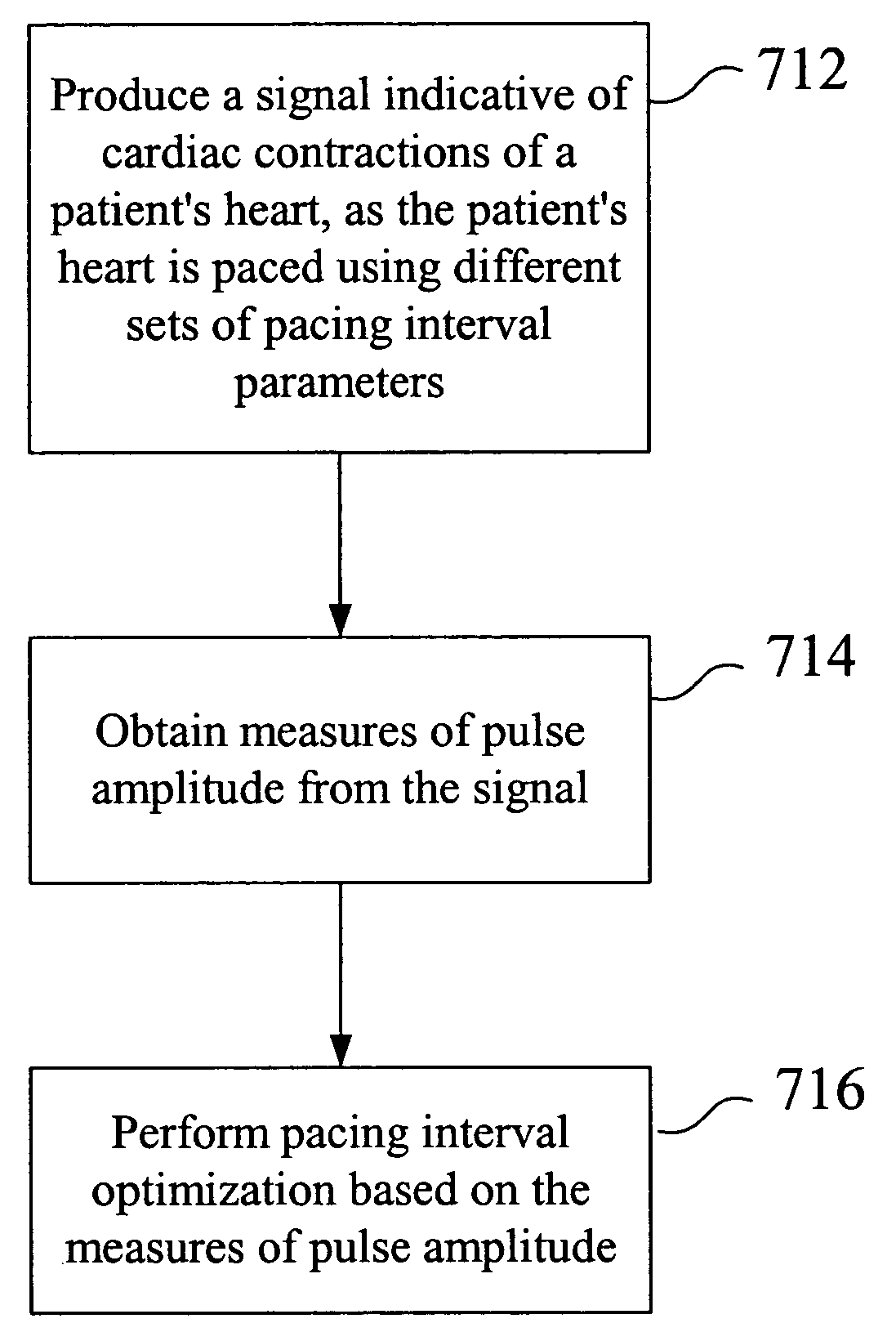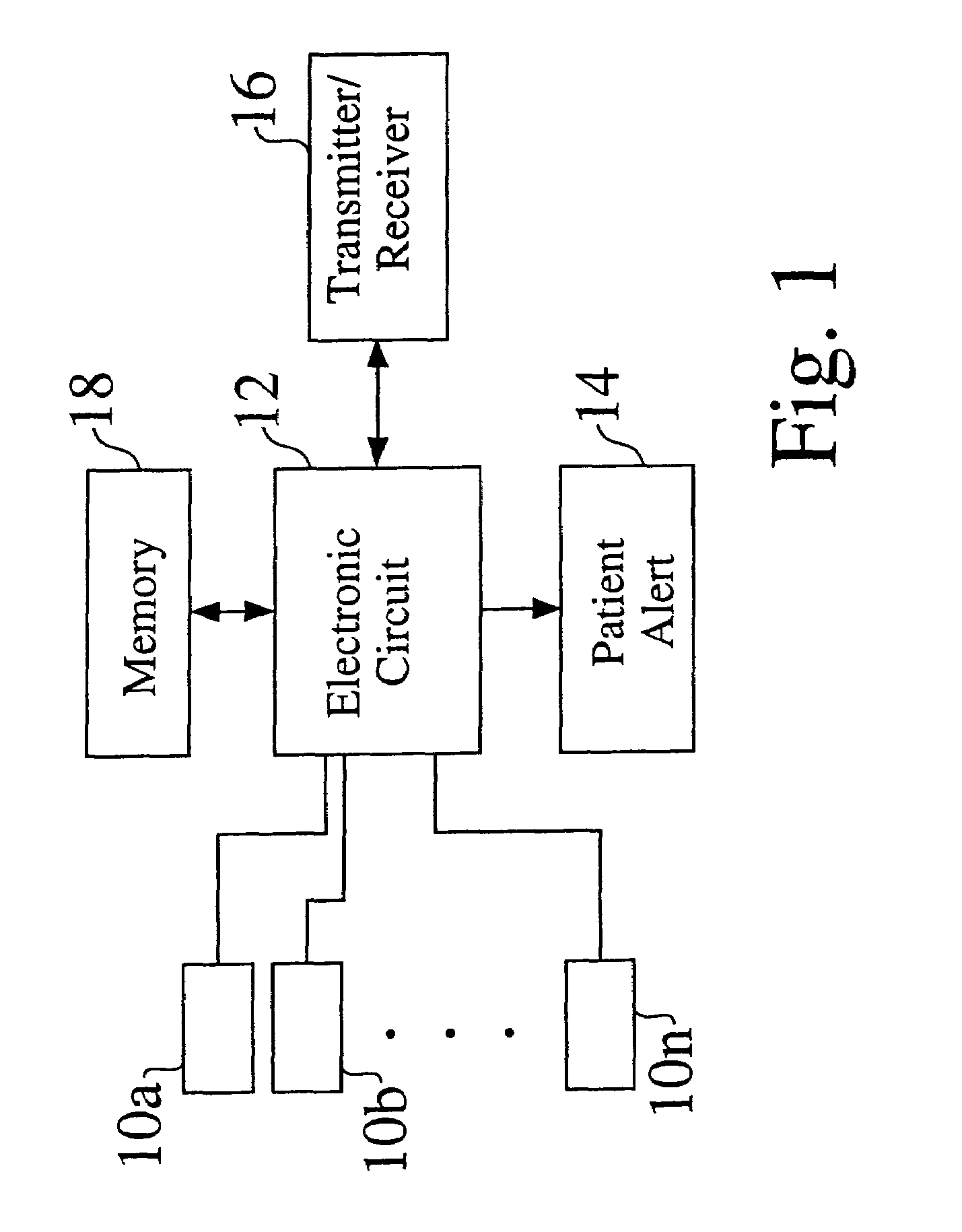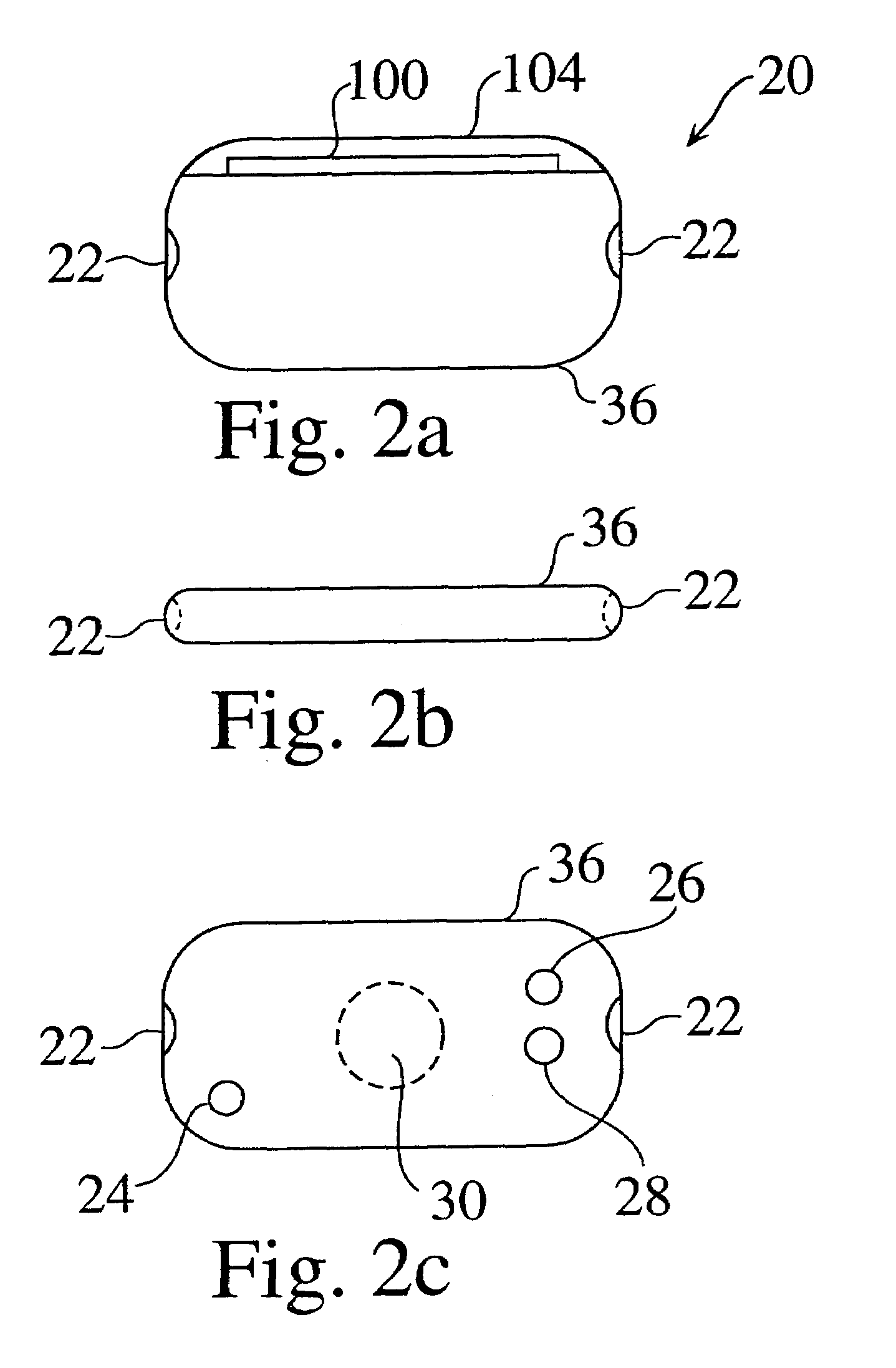Pacing optimization based on changes in pulse amplitude and pulse amplitude variability
a technology of pulse amplitude and variability, applied in the field of monitoring cardiac performance, can solve the problems of increasing perioperative morbidity and mortality, limiting system accuracy, and involving patients in intramyocardial instrumentation
- Summary
- Abstract
- Description
- Claims
- Application Information
AI Technical Summary
Problems solved by technology
Method used
Image
Examples
Embodiment Construction
[0040]A functional block diagram of a monitor according to an embodiment of the present invention is shown in FIG. 1. One or a plurality of sensors 10a, 10b, . . . 10n is connected to an electronic circuit 12, which in turn is connected to a patient alert 14, transmitter / receiver 16, and memory 18, with each of elements 14, 16 and 18 being optional. In an embodiment, the electronic circuit 12 includes a low-power microprocessor. In alternate embodiments the microprocessor is excluded, or control and higher level processing is performed by a microcontroller, an embedded system, a programmable logic device such as a field-programmable logic array, or a combinatorial implementation of a state machine. In an embodiment the transmitter / receiver 16 is an integrated radio frequency telemetry unit. Other embodiments of the transmitter / receiver are possible, including acoustic, optic, electrostatic, and magnetic. In yet another embodiment the receiver is simply a reed switch capable of sensi...
PUM
 Login to View More
Login to View More Abstract
Description
Claims
Application Information
 Login to View More
Login to View More - R&D
- Intellectual Property
- Life Sciences
- Materials
- Tech Scout
- Unparalleled Data Quality
- Higher Quality Content
- 60% Fewer Hallucinations
Browse by: Latest US Patents, China's latest patents, Technical Efficacy Thesaurus, Application Domain, Technology Topic, Popular Technical Reports.
© 2025 PatSnap. All rights reserved.Legal|Privacy policy|Modern Slavery Act Transparency Statement|Sitemap|About US| Contact US: help@patsnap.com



